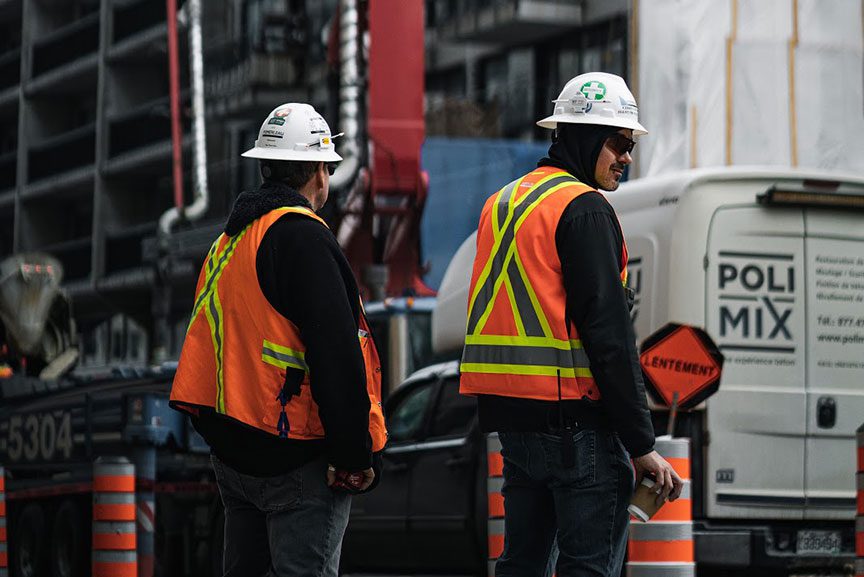-
May 8, 2020
- Blog
- By Cesar Ornelas

What Is A Safety Helmet?
Many lives are saved and brain injuries avoided when workers wear safety helmets. Safety helmets are designed to protect someone’s head against injuries caused by falling objects. If well-made, they should also shield the side of the head, eyes, and neck from any unforeseen impacts, bumps, scrapes, and electrical exposure, etc.
When Should You Wear A Safety Helmet?
Safety issues have always been a concern in industrial or construction activities. The more protected / prepared a worker is on the job site, the less chance an injury or accident will happen. Protection from brain injuries is paramount.
Being encased in bone is nature’s way of protecting the brain, but it is still greatly vulnerable to life-altering injuries without extra safekeeping measures.
Sharp and hard items and other such mechanical incidents may also alter the skin on the head, the skull, and neck, and even the spinal cord at times.
A safety helmet can ensure protection. In serious cases, those injuries may lead to permanent disabilities or even death. Always wear a safety helmet while actively working on a job site where such accidents are at risk.
How Do I Know If My Helmet Fits Me?
Hard hats or safety helmets act as the first line of defense against head injury, but they only work when they are worn correctly and fit comfortably. Take some time trying on helmets and choose one with the right size and fit. A helmet should be:
- Snug. It does not slide from side to side or front-to-back.
- Level. It is square on top of your head, covering the top of the forehead. It does not tilt in any direction.
- Stable. The chinstrap keeps the helmet from rocking in any direction. Chinstraps should be replaced if any part of the buckle breaks. Otherwise, a helmet may fly off in an accident.
- Comfortable. If the helmet is uncomfortable or ill-fitted, it will be a source of agitation, and the less likely you will consistently wear it.
Different Job, Different Helmet
Some industrial workplaces pose greater risks for serious or deadly head injuries. Thus, common industrial safety helmets do not provide sufficient protection. Such types of industries would be mining and construction. They would require high-performance industrial safety helmets for their employees. Those helmets have a shell and a headband with good shock absorption properties and protection against lateral shock. They should also have protective padding that absorbs the energy from an impact and, therefore, reduce the forces inflicted on the user’s head. This padding is typically comprised of foams with elements such as polyurethane.
Helmets Need To Be Replaced
The following helmet replacement guidelines are provided by “Legal Beagle” and based on OSHA’s rules:
Generally, the guideline is that a hard hat should be replaced no more than five years after its manufacture date, even if it was never put into service. This is because hard hats are made from plastic, which degrades over time even in ideal conditions. Any wear or distortion of the hat may compromise its ability to protect the head from impact or electricity.
Even if a hat was never worn, if it was manufactured more than four or five years prior, it should be replaced. If the hat is worn in the sun for long hours or in hostile environments with chemicals in high temperatures, it may need to be replaced sooner, perhaps after two years. If they suffer an impact, hard hats also should be replaced immediately, even if the hat doesn’t appear damaged. The integrity of the hard hat may have been affected by the impact.
The suspension inside the hat should be replaced every 12 months. Hard hat manufacturers test the two primary components, the shell, and the suspension, as a unit, so the integrity of a hard hat and its ability to protect the head from damage relies on having the correct, matching suspension from the same manufacturer as the shell.
Wearing A Helmet Is Enforced
Two types of employees are required to wear head protective gear. The Occupational Safety and Health Administration’s (OSHA) rule for head protection in general industries (29 CFR 1910.135) states the two categories of employees work in areas where falling objects are likely and where near-exposed electrical conductors could contact the head of the worker. Safety helmets need to be worn when performing most construction works, where there are lifting equipment (cranes, hoists, etc.) and suspended loads, works in forestry, works in cisterns, wells, shafts, tunnels, etc. It is in these work environments that the use of a safety helmet will help protect against injuries to the scalp, skull, and cervical vertebrae.
Injured In An Accident? Call Cesar.
Cesar Ornelas is an experienced, knowledgeable injury lawyer who is available 24/7 to represent you or your loved one if you ever experience a head injury on the job. His Law Firm will set up a FREE CONSULTATION to get acquainted with your particular situation and let you know how they can help you get the compensation you deserve. Cesar and his firm have the expertise to give you the answers you need and to give you peace of mind. Don’t delay. Call today: 855-710-4012.
(For more information, click here for “Hard Hat Damage Inspection” and “Storage and Maintenance” and to learn more click for OSHA & ANSI Hard Hat Requirements.)




